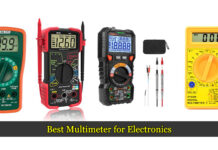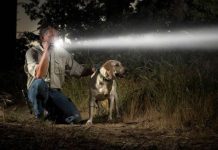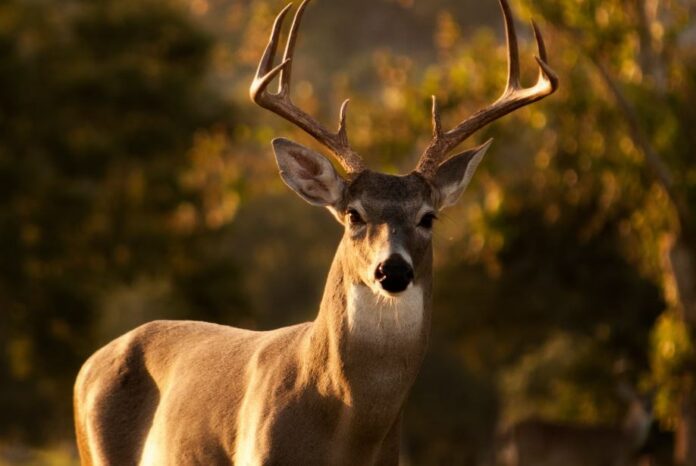Whitetail bucks are an elusive lot. They’re not easy to take down. Ask any experienced whitetail hunter and s/he would tell you how witty and nimble these ruminants are.
Moreover, whitetail bucks don’t just roam around aimlessly – they’re extremely hard targets. They’re very strategic and intelligent – you rarely come across a mature buck during the day.
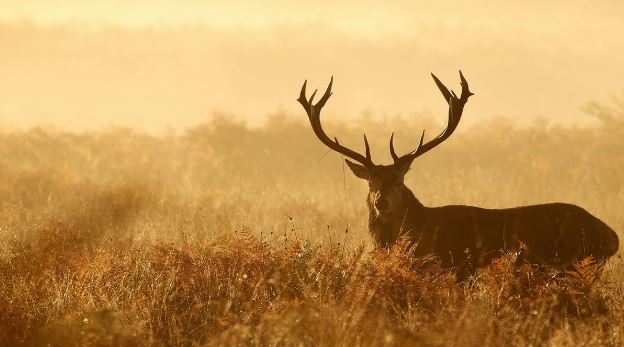
Bucks are nocturnal, meaning that they mainly operate at night. It’s partly why they are very hard to come by. Furthermore, deer have a keen sense of smell and sight and can make out the human scent and notice you from an upwind distance.
Deer can learn your plan to take them down and avoid the trap you’ve set up for them. Hence, repeating the same strategy and not changing the location of your setup can backfire.
But, male deer aren’t without weaknesses.
Hunters have learned that bucks pull out all their stops during the mating season, also known as “rutting”.
It is during this period that their testosterone levels are high; and so, bucks search for does who’ve come to estrus. They are less cautious; hence, more vulnerable during the breeding season.
For many hunters, getting that huge 150-pound buck is a dream come true. Hunters consider bucks as trophies, because their venison is voluminous and delicious, enough to feed your whole family and fetch you a good price on the market.
Understanding the behavior of deer can make a difference between going home full and empty-handed.
Bucks are more vulnerable during rutting. To make their hunting season worthwhile, experienced hunters take advantage of the mating season, which, according to deer population, starts as early as October and ends during late November. The pre-rut, rut, and post-rut periods span during these cold months.
Let’s examine the must-have gear and strategies you need to nail down the whitetail.
See also: How Thermal Imaging Technology Can Improve Your Night Hunting Skills
Things You Need for Hunting Whitetail Deer in the Wild
Boots
These should feature on the top of your deer hunting checklist – you’ll only have yourself to blame if you forget them. Rutting takes place during a cold season. If you want to keep your feet dry and warm, you need boots – good boots.
Given that you’ll spend hours waiting for bucks to approach your shooting range, you need to remain comfortable and focused for long periods to get that fleeting chance. Not just that, but walking on iced snow can cause blisters, which can hamper your movement.
See also: Things To Know Before You Buy Hunter Boots
Weapon
You have a wide variety of choices depending on your needs, budget circumstances, and preferences. Choices range from bows to rifles.
Whitetails are big targets – you need a weapon with a high projectile impact to bring them down cleanly and humanely. No hunter wants to damage the venison with an inaccurate weapon.
Rifles are the best, but they are costlier than compound bows. In addition, you need plenty of munitions, arrows or bolts – you don’t always hit your targets.
Riflescope
This can’t be emphasized enough. The quality of optics is prime. Before you go outdoors on a long hunting expedition, buy high-quality optics. You’ll be moving a lot from place to place, and variable temperatures can cause your lenses to turn foggy.
You don’t want that when glassing, especially when your target presents itself. Carrying as light a weapon as an AR rifle 15 can greatly enhance your mobility. Pick a good AR 15 scope to get an excellent hunting experience.
Clothing
With the cold out there, you need thick clothing. Ensure you bring with you big cloth that you’d be able to fit into other clothes. When it comes to the headgear, a balaclava would camouflage you well.
Cold can also freeze your hands and affect your timing and accuracy. Wear gloves. Camo gloves provide good camouflage; and so, are socks.
You really don’t want to sell your position, simply because your hands and feet don’t rhyme with the surrounding. Whitetail deer are intelligent creatures –they can easily spot you, blowing your cover and causing your mission to fail.
Backpack
Well, you’ll be carrying stuff – lots of stuff. You need a hands-free operationalization of your hunting goals. You can move and hunt carrying relevant stuff on your back.
But you don’t overburden yourself with a heavy backpack. In addition, paddings and waist straps are things you should look for in a backpack.
Scent Killer
As said, whitetail deer can pick up your smell. They can also differentiate the human trails from their own. Being able to sniff and detect human scent is a great ability, which makes them all the more elusive.
And so, other than insulating your hands and feet from cold and sight, they hold scent, which you need to eliminate. Luckily, the market has plenty to offer in terms of sprays and detergents.
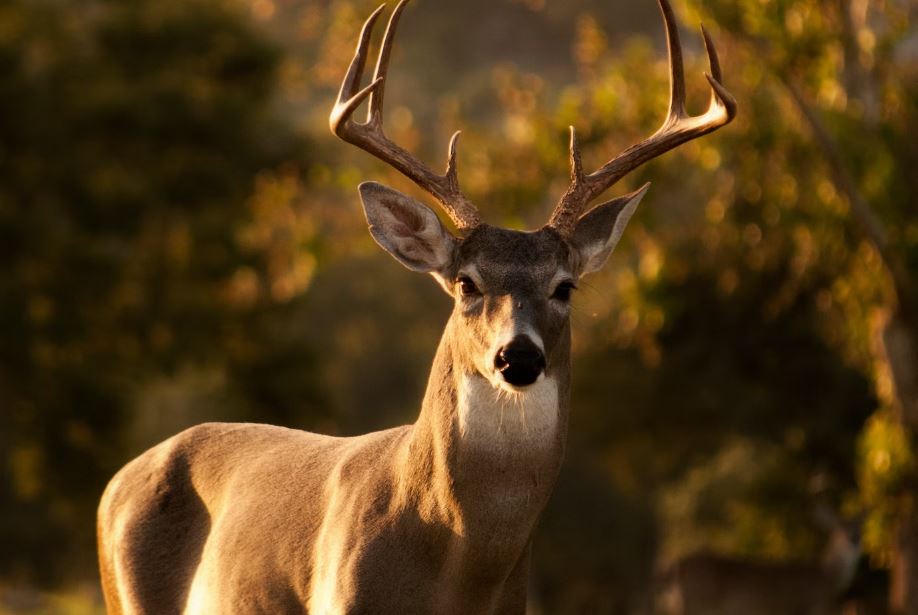
Trail Camera
Inasmuch as you need to track down whitetails, they’re also good at tracking you down. Always keep that in mind.
Having trail cameras can keep you ahead of the game because you can monitor their behaviors, prime feeding locations, routes, bedding, and water sources remotely before the hunting season begins in earnest.
With that knowledge, you can know where to set up your equipment, blinds, and tree stands in anticipation of the target during rutting.
Water
This is self-explanatory, but the catch is this: you need lots of clean water. Water bottles and bladders can come in handy, but in case water runs out, iodine pellets and filters can assure you of safe drinking water from natural sources.
Decoys and calls
Deer are getting wiser and may differentiate their lookalike from the real thing. The success of your decoys depends on how you use them. There’s no guarantee that they always work.
Hunters usually make a lookalike of an estrous doe to trick a buck to come within the hunting range, but that would require you to fake calls.
Binoculars
You need binoculars to spot your targets (before they spot you). But then again, the quality of optics – clear, sharp, and bright lenses. You may need to dig deeper into your pockets but it’s worthwhile.
Headlamp
You want to focus your hands on shooting. Holding torches while shooting can interfere with your aim. A headlamp provides the necessary relief.
Rangefinder
Remember when you zeroed in your scope and determined the maximum shooting range of your weapon? Well, you can’t go outdoors to hunt without doing that. Once you spot a target with your binoculars, a rangefinder can calculate the distance to that target. That information can help you know whether your target is within the shooting range.
See also: 10 Best Spotlights (For deer hunting)
Knife
You’ll need a knife, whether a jack-knife, pocket knife, fillet knife or gutting knife, to skin your game, remove guts, cut food, open gear, defend yourself or cut a rope.
Tree stands and blinds
Hunting a whitetail is like sniping at a high-value target. You need to hide your position and you need to wait for long periods for your target to show up. If you’re impatient, whitetail hunting or sniping isn’t for you.
As such, you’re vulnerable to back and muscle pain, as your body can wear out, as you wait hidden and camouflaged. Most hunters are reluctant to change their positions, but sometimes it’s necessary if your efforts aren’t bearing any fruit.
Tree stands put you in an elevated position. You can climb up and down the ladder to stay in a tree stand.
Night Vision
A whitetail deer is a nocturnal animal. You’ll spend time tracking them down day and night. A night vision goggle can help you visualize them in darkness or in foggy or dull weather.
Other essentials include a poncho tent, food, fire starters, ropes, a flashlight, glow sticks, toilet paper, a survival kit, a hunting license, a wire cutter, and a map.
Footnote
Deer are intelligent and elusive animals. They’re not easy to take down when they’re alert. Deer can catch your smell and spot you from a distance, ruining your chances of bringing them within your shooting range. They can also track you.
Now that in this deer hunting checklist, you’ve learned how deer behave, you can use that knowledge to improve your hunting experience.
You’ve taken the nuggets of tips from experienced hunters. If you want that trophy buck, you must put these strategies into use.






